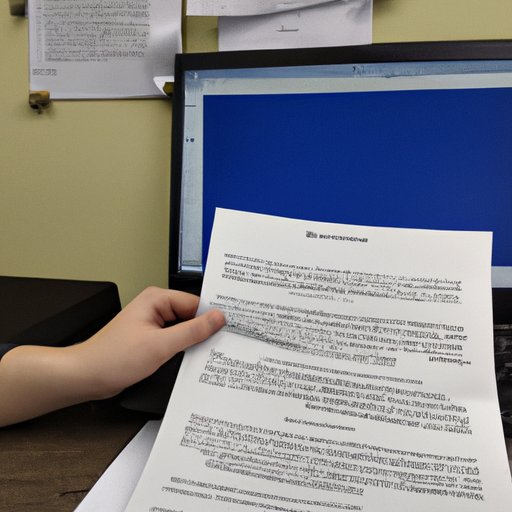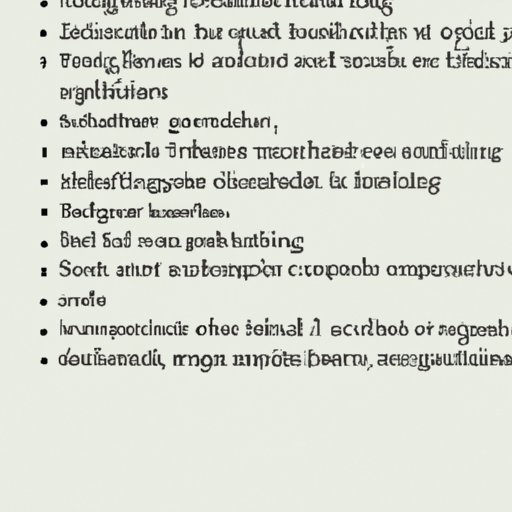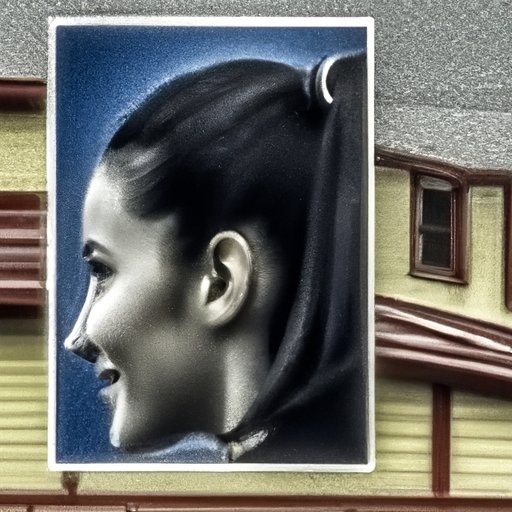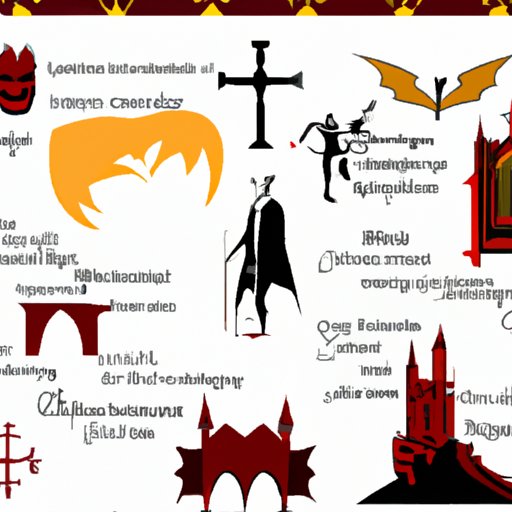Introduction
Gothic literature is a genre of fiction that combines elements of horror and romance to create a suspenseful, dark atmosphere. It emerged in the late 18th century and has since influenced many other genres, including horror, psychological thrillers, and gothic romance. This article will explore the defining characteristics of gothic literature, its historical context, examples of well-known works, influence on modern writing, themes, and its continued popularity today.
Discussing the Defining Characteristics of Gothic Literature
Gothic literature is known for its dark and mysterious setting. These stories often take place in remote castles or abandoned monasteries, shrouded in mystery and fear. The settings are often described as eerie and oppressive, and they give off an air of foreboding danger. In addition, these stories frequently contain supernatural elements, such as ghosts, witches, vampires, and werewolves.
The characters in gothic literature often display extreme emotions, such as fear, dread, and despair. These stories often focus on intense feelings of love and hate, and characters may act impulsively and recklessly in pursuit of their desires. Furthermore, the narrators in these stories are usually unreliable, making it difficult for readers to distinguish truth from lies.
Exploring the Historical Context of Gothic Literature
Gothic literature originated in the late 18th century, with Horace Walpole’s novel The Castle of Otranto (1764). This was the first story to combine horror and romance, and it set the stage for the development of the gothic genre. During the Romantic period, many authors began to write stories infused with gothic elements. These stories explored themes of fear, terror, and the unknown, which resonated with readers of the time.

Analyzing Examples of Gothic Literature
One of the most famous examples of gothic literature is Mary Shelley’s Frankenstein (1818). This novel tells the story of Victor Frankenstein, a scientist who creates a monster out of dead body parts. The dark and eerie setting of the novel, combined with Victor’s obsession with playing God, makes it a classic example of gothic horror.
Another well-known work of gothic literature is Bram Stoker’s Dracula (1897). This novel follows the protagonist Jonathan Harker as he travels to Transylvania to meet the mysterious Count Dracula. The castle in which Dracula lives is described as dark and frightening, and the narrative includes numerous supernatural elements, such as vampires and werewolves. This novel is often credited with popularizing the vampire genre.
Finally, Emily Bronte’s Wuthering Heights (1847) is considered to be one of the greatest gothic novels of all time. The story follows the tumultuous relationship between Catherine Earnshaw and Heathcliff, two people from different social classes who are deeply in love. The novel is set in a desolate and isolated location, and it contains elements of horror, romance, and tragedy.

Examining the Influence of Gothic Literature on Modern Writing
Gothic literature has had a profound influence on modern writing. Many authors have been inspired by the genre’s dark and mysterious settings, supernatural elements, and intense emotional content. The horror genre, in particular, has been heavily influenced by gothic literature.
Psychological thrillers, such as Stephen King’s Misery (1987), also owe much to the gothic genre. These stories often feature dark and oppressive settings, along with unreliable narrators and unpredictable plot twists. Similarly, the gothic romance genre has been shaped by gothic literature, with authors exploring themes of love and obsession in a dark and mysterious setting.

Examining the Themes and Motifs Found in Gothic Literature
Gothic literature is known for exploring themes of fear and anxiety. These stories often depict characters facing terrifying situations, and they emphasize the dangers of the unknown. Another common theme is oppression and rebellion, as characters struggle against forces that seek to control them. Finally, revenge and justice are also explored, as characters attempt to right wrongs and seek retribution.
Examining the Popularity of Gothic Literature Today
Gothic literature continues to be popular today, with many adaptations in film and television. The BBC’s recent adaptation of Dracula (2020) was a huge success, and there have been numerous film adaptations of classic gothic novels, such as Frankenstein and Wuthering Heights. Additionally, gothic subcultural movements, such as the Goth and steampunk scenes, continue to draw inspiration from the genre.
The aesthetics of gothic literature also remain popular. Many people appreciate the dark and mysterious settings, as well as the intense emotions that are found in these stories. Gothic literature continues to be a source of inspiration for writers, filmmakers, and creatives alike.
Conclusion
Gothic literature is a genre of fiction that combines horror and romance to create a suspenseful atmosphere. It emerged in the late 18th century and has since had a huge influence on modern writing. This article has examined the defining characteristics of gothic literature, its historical context, examples of works, influence on modern writing, themes, and its continued popularity today.
(Note: Is this article not meeting your expectations? Do you have knowledge or insights to share? Unlock new opportunities and expand your reach by joining our authors team. Click Registration to join us and share your expertise with our readers.)
